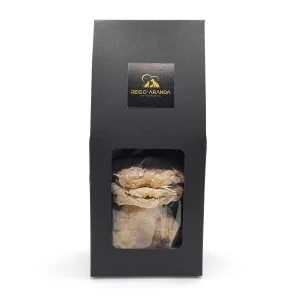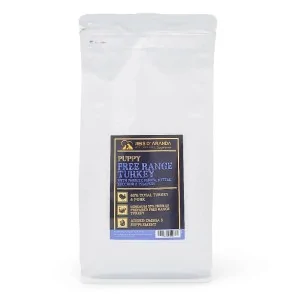Its name says it all: the Vienna blue rabbit comes from Austria. Not only is it beautiful with its shiny blue-grey...
THE MUDI
INTRODUCTION
The Mudi is a breed originating in Hungary and has traditionally been used for herding livestock. Their high intelligence and adaptability has meant that over the years these dogs have been used for a variety of tasks and disciplines.
THE ORIGIN OF THE MUDI
The origin of the mudi is unknown. The ethnic group of the Magyars, a hardy people of excellent horsemen who inhabited present-day Hungary, bred herding dogs as early as the 9th century, and modern cynology notes that at some point in later centuries, three closely related dog breeds developed in this area: the mudi, the puli and the pumi, which were separated as individual breeds in the 1930s. It was in this year that a museum director became the first official Mudi breeder and pushed for recognition of the breed. He also gave it a proper Latin name, the Canis ovilis Fényesi.
It is difficult for us to determine exact dates or the process by which many dog breeds were born, not only because of their origin in isolated regions and the absence of records, but also because, as in the case of the mudi, unfortunately during the occupation of Hungary during World War II most dogs were massacred, especially because of food shortages.
The mudi, reduced to a handful of survivors, would take 30 years after the end of the war to recover, and it was not until 1963 that it received its first recognition by a canine association, the Fédération Cynologique Internationale.
The Mudi is a very unknown dog breed outside Hungary and was granted recognised breed status by the American Kennel Club in January 2022. Today, in its region of origin, the mudi is still used for herding sheep.
WHAT IS THE MUDI LIKE?
GENERAL APPEARANCE : Medium sized sheepdog with wedge-shaped head. Erect ears. The topline of the body slopes noticeably backwards. The head and limbs are covered with short, smooth hair. The rest of the body has a slightly longer coat, strongly wavy to slightly curly. It exists in different colour varieties.
IMPORTANT PROPORTIONS:
- The length of the body corresponds more or less to the height at the withers.
- The depth of chest is slightly less than half the height at withers.
- The length of the muzzle is somewhat shorter than half the length of the head.
HEAD : The head of the Mudi is undoubtedly the most attractive portion. It should give the observer the image of an alert animal, always energetic, cheerful and intelligent, without any hint of fear or aggression. The head is wedge-shaped and tapers towards the nose.
CRANIAL REGION
SKULL: Skull and forehead slightly domed. Occiput not pronounced. The supraciliary arches are poorly developed.
STOP: Slightly marked.
FACIAL REGION
TRUFFLE: Narrow, rounded at the front, with moderately open nostrils. In the black, white, bay and blue merle varieties the colour of the nose must always be black, in the other colour varieties it should be in harmony with the coat colour. For example, the nose in the brown variety will be brown and in the bluish-grey variety it will be bluish-grey. Brown dogs (liver brown) have brown eyelid rims. Bluish grey dogs have bluish grey rims of eyelids.
HOCOCO: Moderate power. Nasal bridge of nose straight.
Lips: Leaning firmly on the jaws. The corners of the lips are smoothly indented. The colour of the pigmentation of the flews corresponds to the colour of the nose.
TEETH : Scissor bite, regular and complete in accordance with the dental formula of the dog. Teeth regular and of medium size.
EYES: Narrow, the inner and outer corners slightly pointed. The eyes are set at a slight slant, giving a somewhat defiant look in the gaze. The eyes should as far as possible be dark in colour. Only in blue merles, gazed eyes (white or blue) are not a fault. The rims of the eyelids are well set on the eyeball, tight and well pigmented.
EAR: Erect, high set ears. Inverted V-shape, covered with abundant hair extending beyond the outer edge of the ears. The response of the ears to stimuli in their movement is very lively. The dog can turn the ears independently of each other as if they were radars. The length of the ears is approximately 10 to 15 % more than the width of the ears at the base of the ears.
NECK: Set on somewhat high. The neck gives an angle of 50 to 55 degrees to the horizontal. Of medium length, slightly arched and well muscled. No dewlap and no pronounced throatiness. In males there may sometimes be a small, very sparsely developed mane, but this must not be so long as to fall.
BODY
TOPLINE: With clear fall towards the croup.
CROSS: Defined and long, muscular.
BACK: Straight, short.
LOIN: Of medium length and firmly structured.
Croup: Short, slightly sloping, of medium width, muscular.
CHEST: The front part of the chest is gently arched. The ribs are somewhat broad and rather flat.
BOTTOM LINE: Slightly tucked up.
TAIL: Set on at medium height. In repose it hangs down, with its distal third tucked up almost to the horizontal. At attention or during lively movement, the tail is carried sickle-shaped above the topline. Docking of the tail is not desirable, but is not considered a fault. In the case of docking, at least 2 or 3 tail vertebrae should remain clearly visible. Anuran specimens which are born with or without tails at all are rarely seen, this is not considered as a fault. The tail is richly covered with hair and on the underside of the tail this hair may reach a length of 10 to 12 cm.
LIMBS
FOREQUARTERS
Shoulders: The shoulder blade is moderately oblique and well muscled. The forechest is rounded and the point of the sternum hardly protrudes.
Upper arm: Medium length. Angle of 45° to the horizontal.
ELBOW: Leaning firmly to the body.
BODY: Firm, dry.
Pastern: Steep.
HANDS: Round, with fingers close together. Little hair between and under the toes. Pads elastic, nails slate grey and hard.
HINDQUARTERS: The hindquarters are slightly sloping backwards.
Upper thigh: Long, rather muscular.
METATARSUS: Short and steep.
FEET: As forefeet. Dewclaws undesirable.
GAIT / MOVEMENT : The movement of the Mudi is characterised by its short striding gait.
SKIN: Firm, without wrinkles.
COAT :
COAT : The head and the front of the legs are covered with short, straight and smooth hair. On the rest of the body the coat is strongly wavy or softly curly, dense, always glossy, about 3 to 7 cm long. In some areas there are clearly visible swirls and ridges. The coat reaches its maximum length on the back of the forearm and thigh where it forms a noticeable feathering.
COLOURS
- Bay.
- Black.
- Blue merle (splashed with black, striped, brindle or spotted on a bluish-grey background, either light or dark).
- Ashen colours.
- Brown.
Small white patches will be tolerated but not desired. A white patch on the chest not exceeding 5 cm in diameter, as well as small white markings on the toes, are tolerated, but not desired.
- White.
SIZE AND WEIGHT
HEIGHT AT WITHERS
- For males 41-47 cm, ideal height 43-45 cm.
- For bitches 38-44 cm, ideal height 40-42 cm.
WEIGHT
- For males 11-13 kg.
- For bitches 8-11 kg.
FAULTS: Any departure from the foregoing points should be considered a fault and the seriousness with which the fault should be regarded should be in exact proportion to its degree and its effect upon the health and welfare of the dog.
ELIMINATING FAULTS
- Aggressiveness or extreme shyness.
- Flesh-coloured, liver-coloured or spotted nose on black, white, blue merle, bay or ashy coloured dogs. Flesh-coloured or spotted nose in brown dogs.
- Missing one tooth or more than one tooth of the incisors, canines, premolars 2-4 and molars 1-2. Missing more than two PM1 ; M3 shall not be taken into consideration.
- Overshot or undershot mouth, arches of incisors deviated and lack of contact between upper and lower incisors of more than 2 mm.
- Yellow eyes in black dogs.
- Hanging ears.
- Coat short, smooth and close fitting all over the body ; long coat on the head; coat tending to mat.
- Colour grey/wolf ; black and tan with yellow to brown patches.
- Height under 38 cm or over 47 cm.
- Albinism.
Any dog showing clear physical or behavioural abnormalities should be disqualified.
NB: Male dogs should have two apparently normal testicles fully descended into the scrotum.
HEALTH OF THE MUDI
The mudi is a very young and primitive breed characterised by great physical robustness. Well cared for, it can live up to fifteen years. However, physical and mental exercise should not be lacking to promote the health of this energetic dog. Without it, he can develop pathological behavioural problems, such as aggression and apathy. Despite the energy of a mudi puppy, remember that dogs should not be exercised until they are 12-15 months old. This is because they could suffer permanent damage to their locomotor system. They should also be prevented from climbing stairs until that age. As an adult, you can start training slowly but steadily. Sport will benefit them both physically and mentally.
THE MUDI'S PERSONALITY
The mudi is a demanding dog, which needs a high level of activity and the physical and psychological stimulation it requires, even though it is a line bred purely for companionship and not for working.
They learn very easily and it should also be noted that they are very protective dogs and make great vocal use, in other words: they are very noisy, and this is something that should be taken into account when living with one. Breed experts point out that they are not shy or fearful dogs, but they are very wary of people and other unfamiliar animals, so when living with children or other animals, it is recommended that there be a process of adaptation and adult supervision until the mudi trusts and accepts the new presence. With their immediate family, they are playful and very affectionate dogs.
At present, they are used in work such as drug detection and have proven to be excellent in dog sports such as agility due to their extreme lightness of body.
CONCLUSION
Being a herding dog, he requires an active family, which allows him to unleash and develop his potential. It is perfect for intelligence tasks, trials and sports, so it is not recommended for sedentary families.
The Mudi is also distrustful by nature, making it an excellent watchdog if trained to do so. In addition, they are often attracted to games such as frisbee and disc.
Leave a comment
Log in to post comments
















